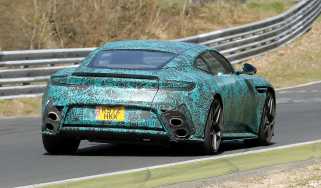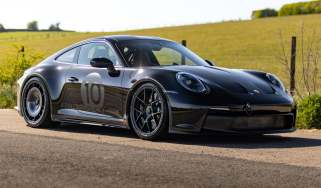'It’s time car makers gave us the wheely good alloys for free'
The problem with the proliferation of alloy wheel choices is that it's exposing us to deliberately cack wheel design

I’m old enough to remember when cars were available with just one style of alloy wheel. Gosh Granddad, this is fascinating, tell us more about the restricted rims of the ’80s. Oh, OK then. Gather round, children.
Back when I was a kid many car companies had just one design of alloy, and often it was optional. Most BMWs, for example, came on steel wheels unless you forked out for that classic slightly dished design with the ring of spokes around the outside. Mercedes served up something similar but fussier that it fitted to saloons and sports cars until the mid-’80s, when the corporate alloy became that attractive flat-faced style, as seen on the 190E 2.5-16. Jaguar had those ‘pepper pot’ wheels they slapped on XJs and XJ-Ss; Ferrari remixed the same basic five-spoke design; to fill a 911’s wheelarch Porsche gave a Fuchs. And then later a phone dial with only five holes. The alloy wheel of the ’80s sporting car was simple. One company, one design. That was it.
Now things are rather more complicated. Do you know how many designs of wheel are available for, say, a mid-range Jag XE? It’s ten. The new 911 has four styles of alloy, three of them optional. Even the Golf R has two optional alloys, plus one of those styles in black. And that’s just for one model.
In itself, this is no bad thing, though it might lead to twinges brought on by the agony of choice and it makes buying a second-hand M5 or C63 or Cooper S slightly trickier if you’re determined to find one with those wheels. But you can always find a set for sale on the internet, especially if you don’t mind buying things that are pre-kerbed and/or stolen.
No, the only problem with the proliferation of alloy wheel choices in recent years is that it’s exposing us to deliberately cack wheel design. An actual car designer from an actual car company once explained this to me, although he didn’t use the word ‘cack’. It goes like this. Marketing departments want to offer plenty of choice. So the standard alloy is of a particular size, and then there’s at least one upsell option, which is bigger and therefore looks cooler and more impressive. The designers, being car designers, want the car to be on the bigger wheels. They’d rather the bigger wheels were standard, but marketing don’t want to give away what they could charge for, which is why the smaller wheel has to remain. So, to encourage people to pay extra not to have it, the lesser wheel might be made to look a bit, well, lesser. Not completely awful, of course, but certainly not as nice. Good for the designers, because it urges people to upgrade to the wheel they want to see on the car. Good for marketing, because an upgrade means a bit of extra cash in the transaction.
This was fine and dandy for a time, and that time was when people actually bought cars, either with their own money or a loan from the bank. But that’s not how new cars are shifted today. Those M3s and F-types and Caymans you see around, you can bet not one of them is owned outright. PCPs have become the default car sales setting, to the extent that when I bought my Land Rover Defender outright for actual cash money, ooh get me, the salesman unthinkingly tried to offer me gap insurance. Of course he did, every other customer is buying an Evoque in a way that might require it.
The problem with a PCP, or a lease, is that trying to upgrade your alloys does some unwelcome things to your monthly payments. I’m sure some people go for it nonetheless, but it’s a hard hit to take for the sake of the looks, and unless you’re wracked with vanity you’ll probably cool your boots on the fancier rims. In times past, the tempting upgrade worked because £950 on top of a 50-grand car might have felt like small fry, whereas £950 spread across a three-year finance deal at today’s lo-lo rates proportionately warps the numbers enough to be off-putting.
This is a problem for car companies because now that people are resisting the upgrade trap there are a load of cars out there running around on the less good wheels. If you’ve ever seen an entry-level Range Rover Velar or boggo Boxster on the alloys you get for nowt, you’ll know what I mean. They’re not handsome and they do the general image of the car no favours at all. As such, it feels like time for all car companies to dig deep and give us the nice alloys as standard rather than continue with this sneaky bullying campaign for wheel upgrades that doesn’t tally with the way people get their arses into new cars.
Either that, or go back to the heady days of my childhood when an entire company had just one design of alloy wheel.


